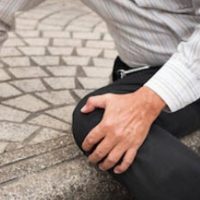Basic Elements of a Slip-and-Fall Claim

Falls are the leading source of ER admissions in the United States. Falls send more than eight million Americans to hospital emergency rooms every year. These victims usually sustain serious injuries, such as head injuries, that are normally permanent. In fact, most adults over 65 who slip and fall cannot ever live independently again.
Physical injuries are only part of the picture. Falls cause serious emotional injuries as well, especially among older adults. Many of these victims are so afraid of falling again that they completely isolate themselves. This isolation often ends them into deep, spiraling depressions.
A Sugar Land personal injury lawyer obtains the compensation these victims need and deserve. This compensation usually includes money for economic losses, such as medical bills, and noneconomic losses, such as pain and suffering. Usually, personal injury cases settle out of court, and on victim-friendly terms.
Duty of Care
The duty of care, which is based on the principle of the Good Samaritan, applies to almost everyone, including property owners. The extent of the property owner duty of care usually depends on the relationship between the victim and owner, as follows:
- Invitee: A duty of reasonable care applies if the victim was a business or social invitee (permission to enter and remain and some benefit, economic or noneconomic, to the owner). In this context, the duty of reasonable care requires owners to address and remove fall injury hazards, like uneven walkways.
- Licensee: A lesser duty of care applies if the victim was a person like a guest of an apartment tenant (permission but no benefit). Usually, owners must warn licensees about any latent, or hidden, fall injury hazards.
- Trespasser: Usually, no permission and no benefit means no duty of care. Some exceptions, like the attractive nuisance rule, protect child trespassers who play near untended swimming pools and other attractive nuisances.
These categories sometimes overlap. For example, a nursing home visitor could be a licensee or an invitee. The owner benefits because visitors lift the spirits of residents.
These categories also shift. For example, if Lisa arrives as an invited guest at a party, she’s an invitee. But if she steals pain pills out of the medicine cabinet while she’s there, she becomes a trespasser.
Knowledge of Hazard
To obtain compensation, a Missouri City personal injury lawyer must prove that the owner knew about, or should have known about, the fall injury hazard.
Generally, direct evidence of actual knowledge is the best evidence. This evidence includes restroom cleaning reports and prior falls caused by the same hazard. Insurance companies usually conceal this evidence as long as possible. So, if a fall injury case settles too early, the best proof, and therefore maximum compensation, may be unavailable.
Circumstantial evidence of constructive knowledge (should have known) is admissible as well. The time-notice rule governs such evidence. Think of a piece of lettuce on the floor. If that piece of lettuce was wet and crisp, it probably just fell, and the owner probably hadn’t had a chance to pick it up. If the lettuce piece was dry and wilted, as if it’s been on the floor for some time, that’s different.
Work With a Detail Oriented Harris County Attorney
Injury victims are entitled to significant compensation. For a free consultation with an experienced personal injury attorney in Missouri City, contact the Henrietta Ezeoke Law Firm. We routinely handle matters throughout the Lone Star State.
Source:
nfsi.org/nfsi-research/quick-facts/
